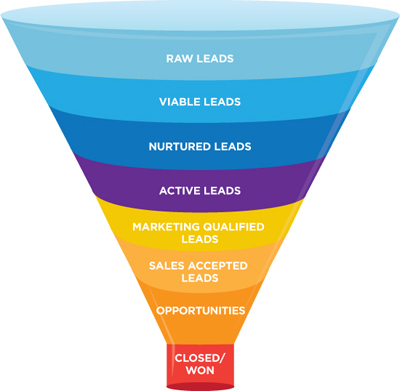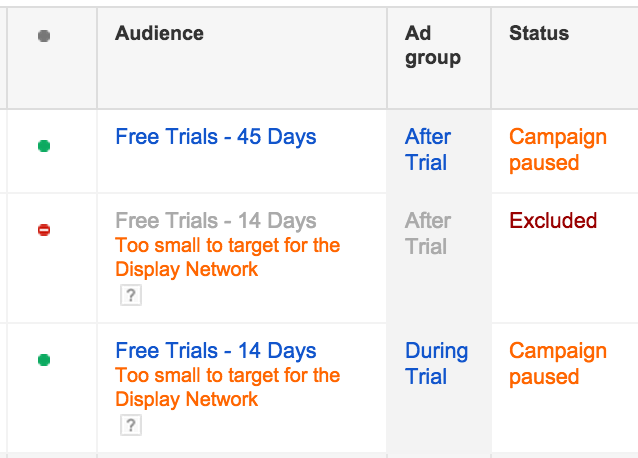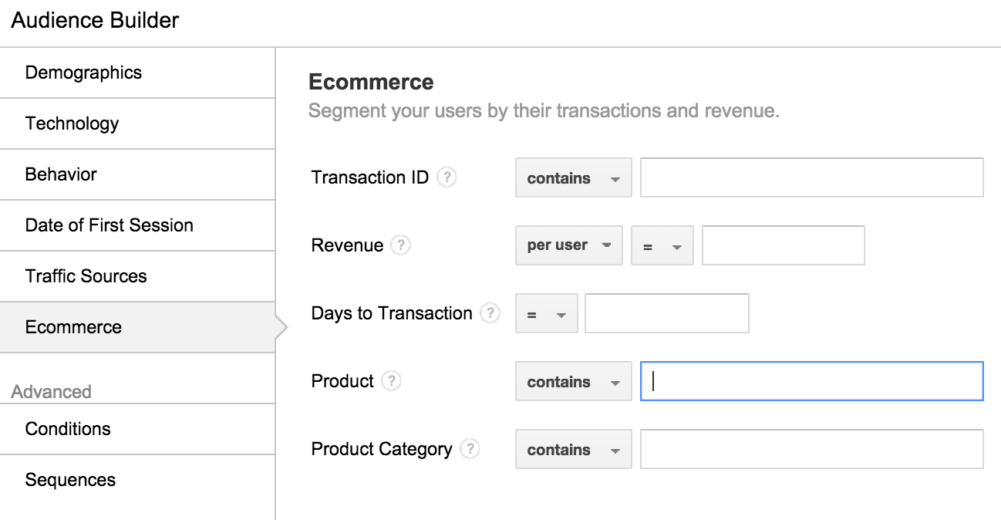Paid search is (mostly) concerned with gaining conversions. This is great and all, and definitely should be your main focus, but often times we forget about what happens after the conversion. Why is this important, you ask? For lead generation, most conversions will not immediately turn into sales. These leads have to be nurtured in order to become legitimate sales opportunities. For ecommerce, you want to gain a lifetime customer, not just a one-time purchaser. Here we’ll go through nurturing and retention strategies for both account types.
Lead Generation
Depending on your specific goals for PPC, you may want to build out a Full Funnel Marketing Strategy to fill every part of that funnel. If you’re not familiar with the typical sales funnel, here’s a quick refresher:
Image Source
Of course, depending on your client’s particular business model, this funnel may look a bit different.
Remarketing towards converters (leads) can be a great way to keep users interacting with your brand to increase the likelihood they convert into a sale. This is another great opportunity to nudge those users to becoming a customer by offering them a discount or special offer only given to them.
If your site has multiple ways to “convert” (for example: whitepapers or other resource downloads that require some tidbit of information from the user) but a free trial signup is much more valuable, you can count those other conversions as micro conversions. Once you set these up as a conversion, go ahead and remarket to them. This allows you to use specific messaging in your ad copy that the user may be familiar with from whatever content they already downloaded.
Another strategy is to point these users to other parts of your site that they may find helpful or informative. For example, if a user downloads a whitepaper or starts a free trial, you might show them ads to your customer testimonials or resources page for additional information. This technique builds credibility with your brand, and gives the user more information they need to make their decision. Depending on your sales cycle, customers may need a while to think about the decision.
Ecommerce
With ecommerce accounts, you might think that once someone has purchased something, that’s it, you’re done with them. Wrong! Let’s look at an example from Google Analytics:
Returning visitors have a higher conversion rate, lower bounce rates, and more pages per session. While returning visits have fewer transactions, average order value is higher, resulting in greater overall revenue.
Now looking at it rolled up for Google and Bing stats:
Remarketing to users who have made a purchase is a great way to increase your brand’s top of mind awareness when that users needs to make another purchase. Again, this is a great way to offer your loyal customers a coupon code for a discount.
If you have access to customer lifetime value through your backend CRM system, you can import this data into analytics and start to figure out the behavior of these users.
Implementation
So, how do you actually go about implementing a remarketing strategy aimed at converters?
It’s pretty simple actually. Just set up your remarketing list to include users who completed whichever (if you have more than one) conversion you want to target. Once you decide which strategy you want to go with, build out your campaigns appropriately.
For example, if I’m targeting users both during their free trial and immediately after their trial ends, I want different ad copy for those time periods. I accomplish this by creating 2 audiences: one with a 14-day cookie window for during the trial, and one with a 45-day window for after. Now we create two ad groups, one for during the free trial and one for after. In the ad group targeting after the trial has ended, exclude the 14-day audience.
In this particular example, my audience for users who are currently in the free trial is too small to target. Be aware that too small an audience is a possibility, and you might need to open up to all converters (if you are tracking other conversion types).
On the ecommerce side, you can also remarket towards people who purchased a specific item using Google Analytics. That way you can advertise accessories, similar products, or other products they might be interested in.
As a side note, you can also setup a Dynamic Remarketing campaign to target past buyers.
Closing Thoughts
While I don’t think your PPC strategy should solely hinge on targeting converters, it’s definitely something to keep in mind as you’re growing your account. If you get the hang of nurturing leads and customers now, you can really have an even greater impact on your client’s business long term. It might be worth your while to have a discussion about this topic with your client, and determine with your goals, budget, etc. if this strategy is something that you should be implementing.








